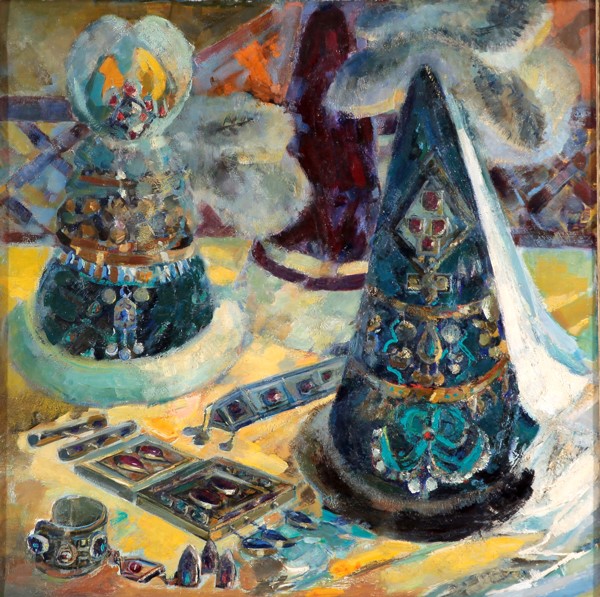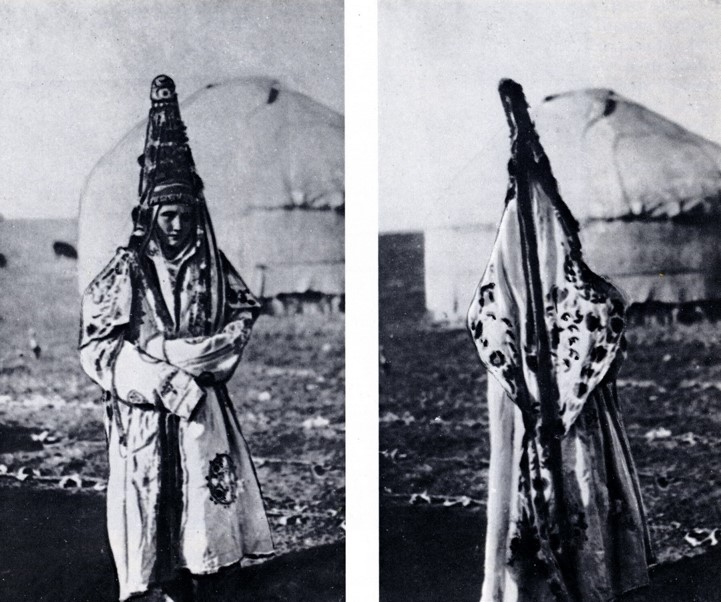Saukele - female wedding headdress
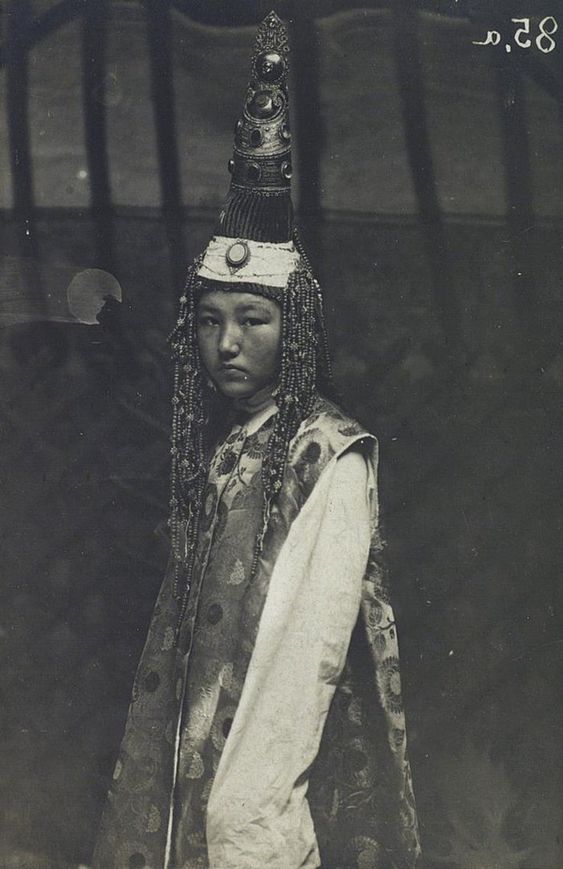
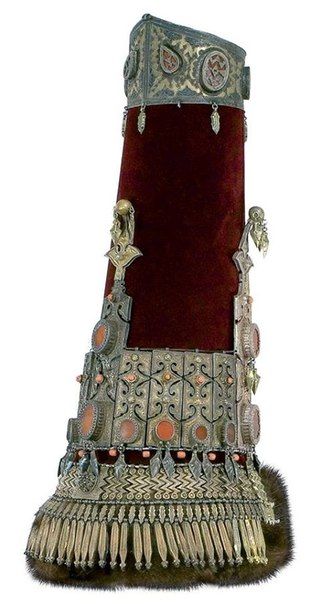
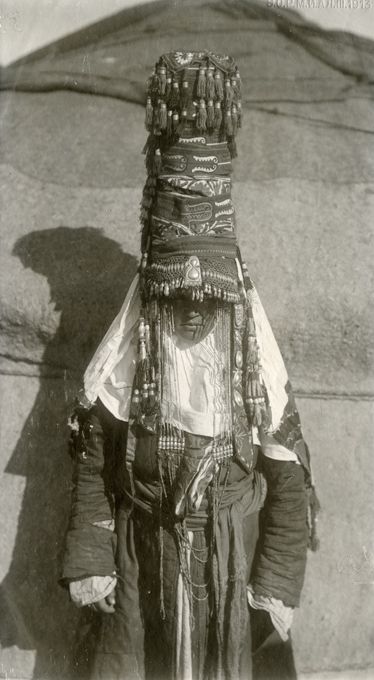
There were as many saukele as there are brides. And neither one repeated the other. Only the main principle remained the same for everyone – height. It sometimes reached 70 centimeters and even more. And the higher the saukele was, the more it was considered that the bride was brought up in greater respect for traditions. Because the higher the saukele, the lower the bride had to bend when entering the groom’s yurt. It was considered a good sign if the tip of her hat, while bowing, reached the hearth of the yurt. So the mothers tried to make the saukele for their daughter-bride as high as possible so that they would receive the bride in the groom’s house softer and kinder.
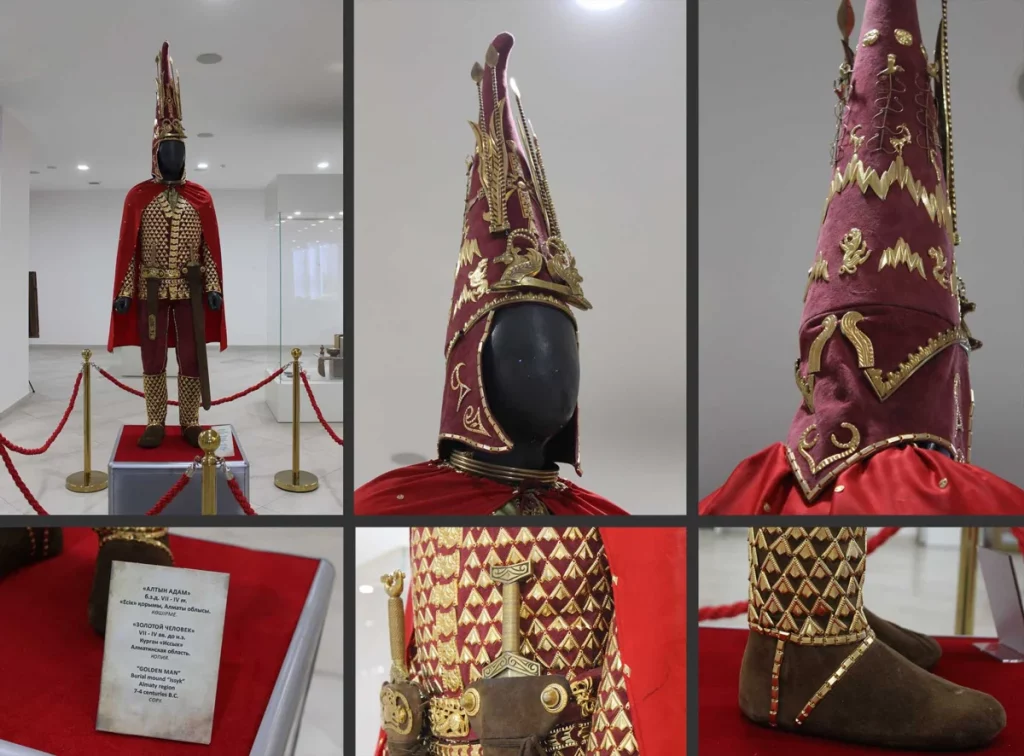
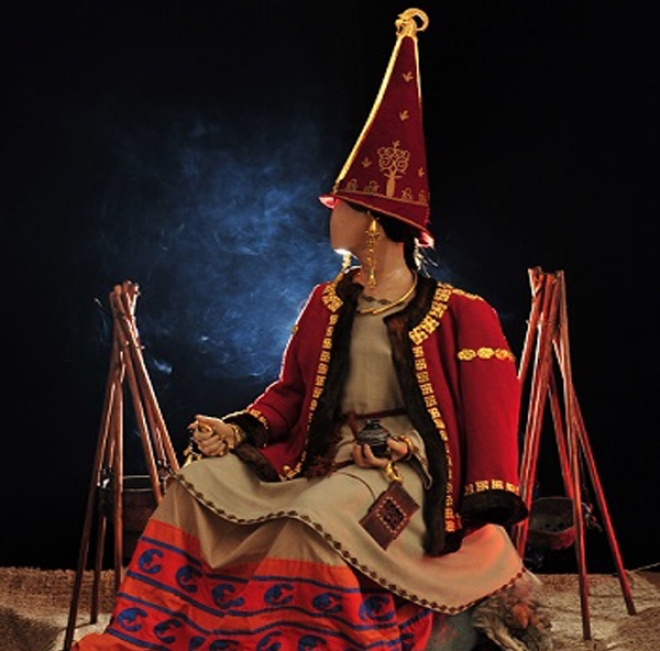
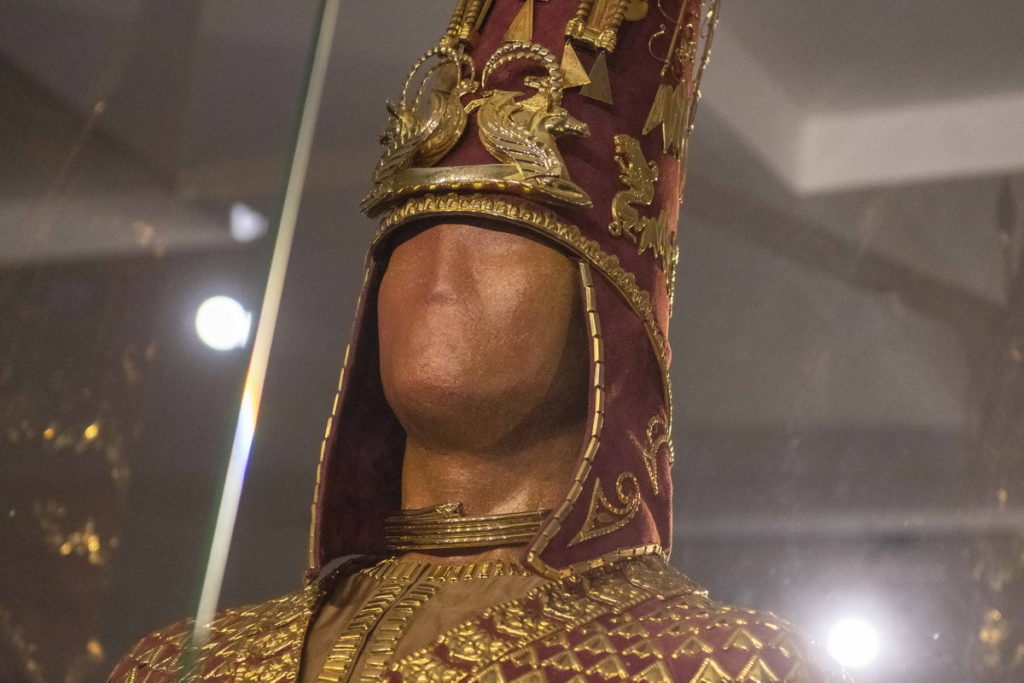
Saukele is 100% borrowed from the Scythians, for whom the pointed high cap served as the “crown” of the ruling elite.
Traditionally, the headdress was the most expensive piece of the bride’s attire. The richer the father was, the richer the saukele was decorated. It was sewn from the most expensive fabrics, decorated with gold, precious stones, embroidered with real gold and silver thread. Rich brides had emeralds and rubies on their hats. But even the poorest families were trying to give their last money to decorate the headdress of their daughter-bride with turquoise and carnelian. In the 19th century the cost of one decent saukele in modern money could reach 18 thousands US dollars!
We can say that, in contrast to the box, in which everything is inside, in the case of the saukele, everything, on the contrary, was sewn on the outside. There were several reasons for such demonstration:
- firstly, it was a social marker, and upon arriving in the groom’s aul (village), the bride made it clear to everyone how important she was, from what tribe, region, how well-born and how dangerous it is to oppress her; after all, a cool family with dad, uncles, brothers, their warriors is behind her back. In a word, the saukele on the bride’s head immediately was signalling “who is who” information.
- secondly, in the event of a divorce, the death of her husband, a new marriage, etc., the bride could lose the yurt, cattle, but the saukele always remained her property. Even if the woman dies, being married, her parents had the right to demand from the widower to return the saukele to them. In short, “I carry everything with me” attitude, so wife could safely freak out, slam the door if something happened and leave her husband without losing anything in terms of finances (children are a separate conversation).
- thirdly, the wisdom to materialize the dowry in the saukele also lay in the fact that the bride very cunningly did not invest in the groom’s fortune. Imagine that instead of saukele, she would join a new family with cattle. In a new family, cattle or horses (and one saukele could cost like a herd) would have become common in any way. They would be eaten, sold, perhaps they would die from diseases, and so on. And the bride’s dowry would melt… And saukele? Never! Whether it’s snow, or rain, or even a plague!
To summarise, saukele was not only beatiful decoration of a Kazakh wedding costume but also important multifunctional item in a woman’ life.

